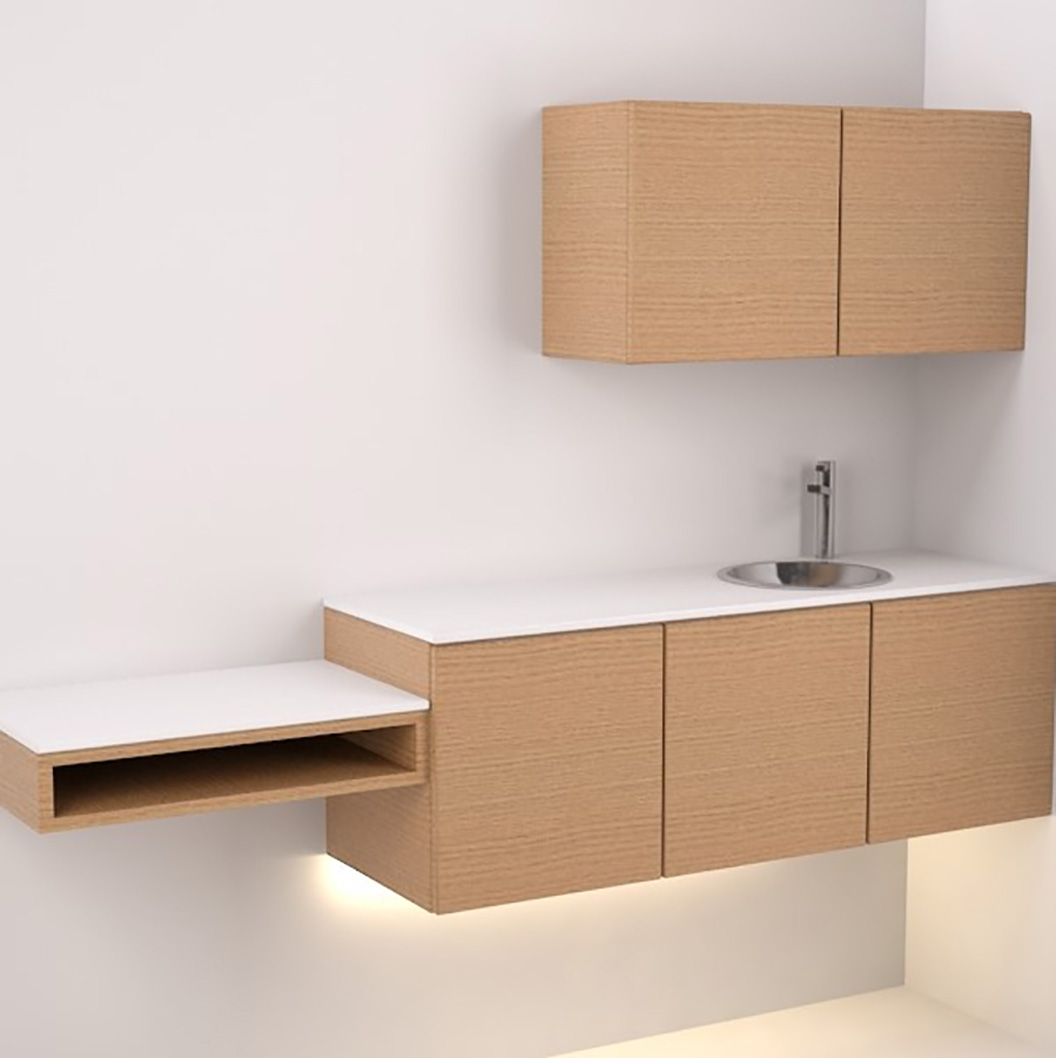Hey there, bathroom renovators! Ready to ditch that clunky old vanity for a sleek, modern upgrade? Floating sinks are taking the design world by storm, and for good reason. They’re not just a pretty face; they can make your bathroom feel bigger, brighter, and way more stylish. But are they right for your bathroom?
We’ll break down everything you need to know about floating sinks—from their amazing benefits (hello, easy cleaning!) to the potential drawbacks you should consider before you start swinging a sledgehammer. Plus, we’ll dive into the hottest styles, materials, and answer that burning question: are floating sinks still on-trend? Let’s get started!
What Exactly Is a Floating Sink?
Imagine a sink that seems to magically hover in mid-air. That’s the allure of a floating sink (sometimes called a wall-mounted sink, or floating vanity). Instead of being supported by a base on the floor, it mounts directly onto the wall. This design choice isn’t just about looks (though it does give your bathroom a modern, minimalist vibe).
Floating bathroom sinks offer a range of functional benefits, including:
- The Illusion of Spaciousness: No more bulky cabinets cramping your style (or your floor space!). Floating sinks open up the room visually, making even the tiniest bathrooms feel bigger.
- Effortless Cleaning: Say goodbye to awkward contortions trying to clean around a traditional vanity base. With a floating sink, all you need is a quick sweep or mop underneath, and you’re done.
- Customization King: Floating sinks play well with a variety of countertop materials, faucet styles, and storage solutions, letting you personalize your bathroom design.
- Accessibility Champion: That open space below the sink isn’t just about aesthetics—it can be a game-changer for individuals with mobility issues.
Why Choose a Floating Sink? Unveiling the Benefits
Okay, you’ve got the basic idea, but let’s dive a little deeper into why floating sinks are making a splash in the design world.
A Style Upgrade Like No Other
Let’s be honest, traditional sinks can be a bit… blah. Floating sinks, on the other hand, scream modern chic. They instantly add a touch of minimalist elegance that elevates your bathroom game. And with so many materials and designs available, you can find the perfect floating sink to match your unique style.
Space-Saving Superstars
Remember that feeling of spaciousness we mentioned? That’s the magic of a floating vanity for bathroom. By ditching the traditional vanity base, you instantly unlock valuable floor space—a total game-changer in smaller bathrooms.
Cleaning Just Got Easier
Who wants to spend their life scrubbing around a clunky sink base? Not you! With a floating sink, cleaning becomes a breeze. You can easily reach all the nooks and crannies, saving you time and effort.
Customizable Height: Your Comfort, Your Choice
One size doesn’t fit all, especially when it comes to sinks. Floating sinks can be installed at any height you prefer, making them a great option for people of all shapes and sizes.
Plumbing Power Up
Since these sinks are mounted directly to the wall, you’ve got more flexibility with your plumbing. This often means easier installation and fewer headaches down the road.
Exploring Floating Sink Styles: Which One’s Your Perfect Match?
Now that you’re convinced floating sinks are awesome (we knew you’d come around), let’s explore the different types:
- Vessel Sinks: Imagine a beautiful bowl sitting gracefully on your countertop. That’s the vibe of a vessel sink. They come in tons of materials like ceramic, glass, and even stone, so you can really let your personality shine.
- Undermount Sinks: If you’re all about clean lines and a seamless look, this one’s for you. Undermount sinks are installed beneath the counter, creating a super sleek and modern feel.
- Integrated Vanity Units: Think of this as the all-in-one package. It’s a pre-designed unit with the sink and countertop already combined. Talk about a streamlined, pulled-together look!
Before You Jump In… Considerations for Floating Sink Installation
Floating sinks are pretty amazing, but there are a few important things to keep in mind before you start picking out your dream design:
Weight and Support: Choose Wisely
Make sure your chosen sink and the mounting hardware are strong enough to handle the combined weight of the sink itself plus anything it will need to carry (water, your hands while you wash, etc.). It’s always best to consult with a professional to ensure your wall can provide adequate support.
Wall Power: Don’t Skimp on Structure
Floating sinks need sturdy wall framing for safe and secure installation. If you’re working with drywall, you might need to add additional reinforcement to handle the weight. This is definitely a time to call in the pros—better safe than sorry, right?
Plumbing Check: Plan Ahead
Think about how you’ll access your plumbing for future repairs. A little planning now can save you major headaches (and costs!) later.
Where to Find Your Dream Floating Sink
Ready to take the plunge? Here are some places to start your search:
- The Usual Suspects: Big box stores like Home Depot, Lowe’s, and Amazon offer a wide variety of floating sinks in a range of styles and budgets.
- Online Style Hubs: If you’re looking for something unique and design-forward, check out online marketplaces like Etsy and Houzz. You’ll find handcrafted and one-of-a-kind pieces that will make a statement.
- The Custom Route: For a truly personalized touch, consider working with a professional fabricator to create a custom-made floating sink. The sky’s the limit!
But Are Floating Sinks Still in Style?
You bet they are! Floating sinks haven’t lost their cool factor. In fact, they’re more popular than ever, and for good reason!
Here’s why floating sinks have serious staying power:
- Timeless Appeal: Their clean lines and minimalist aesthetic transcend fleeting design trends.
- Practical Perks: The space-saving, easy-cleaning, and customizable aspects of floating sinks make them a practical choice for modern living.
- Constantly Evolving: Designers continue to innovate with new materials, shapes, and sizes, ensuring that floating sinks remain fresh and exciting.
So, if you’re wondering whether floating sinks are just a passing fad, rest assured, they’re here to stay. They offer the perfect blend of style and functionality, making them a smart and stylish investment for any bathroom renovation.
Unlocking the Drawbacks: Are There Any Downsides to Floating Sinks?
While floating sinks offer a ton of benefits, it’s only fair to consider the potential downsides before you commit to this trendy bathroom update.
Storage Space: Less is More (Or Is It?)
One of the biggest trade-offs with floating vanities is storage space. Those sleek, minimalist designs often come with smaller cabinets or even no cabinets at all! If you’re someone who likes to keep a lot of toiletries on hand, you’ll need to get creative with storage solutions:
- Embrace Wall-Mounted Storage: Floating shelves, wall-mounted cabinets, and even stylish hooks can help keep your bathroom essentials organized and within easy reach.
- Maximize Vertical Space: Choose tall, narrow storage units instead of wide, shallow ones to make the most of vertical space.
- Think Outside the Bathroom: If space is super tight, consider storing less frequently used items in a linen closet or another area of your home.
Installation: Not Your Average DIY Project
Installing a floating vanity isn’t always a walk in the park. Because they need to be securely attached to the wall to support weight, you’ll likely need to enlist the help of a professional plumber and potentially a contractor, especially if you’re not comfortable with:
- Structural Reinforcement: If your walls aren’t sturdy enough to support the weight of a floating vanity, you’ll need to reinforce them, which can add to the overall cost and complexity of the project.
- Plumbing Know-How: Floating sinks often require specific plumbing fixtures and connections, so it’s essential to work with a plumber experienced in this type of installation.
Plumbing: Out of Sight, Out of Mind? Not Always.
With floating vanities, those pipes and plumbing connections might be visible. Now, some people dig this industrial-chic look, but others find it a bit unsightly. If you’re aiming for a super polished aesthetic, exposed plumbing could cramp your style.
Height Matters: Finding the Right Fit
Floating vanities are typically installed at a fixed height. While this can create a sense of spaciousness, it might not be the most ergonomic choice for everyone in the household, especially young children or very tall individuals.
And speaking of accessibility, if you have family members with mobility issues, a floating vanity might not be the most user-friendly option.
Durability and Potential Damage: Plan for the Long Haul
Like any home fixture, floating vanities need to be installed correctly to avoid problems down the road. Here are a few things to keep in mind:
- Weight Distribution: Be mindful of how much weight you’re putting on the vanity and distribute it evenly to avoid putting undue stress on the wall mounts.
- Water Damage Prevention: Floating vanities themselves are typically water-resistant, but the open space underneath can make it easier for spills or leaks to damage your walls or flooring. Wipe up any spills promptly and consider using a bath mat to protect the floor.
Floating Sinks: A Smart Choice for Your Bathroom?
Floating sinks offer a stylish and modern way to upgrade your bathroom. They free up space, make cleaning a breeze, and add a touch of contemporary elegance. However, they also come with a few considerations, such as limited storage and the need for professional installation.
By carefully weighing the pros and cons and planning your project carefully, you can decide if a floating sink is the right choice for your bathroom. If you’re looking for a fixture that elevates both style and functionality, a floating sink might be just the ticket.
- Grass Forever in Livermore: Your Guide to Artificial Turf - April 22, 2025
- German Roaches vs. American Roaches: Key Differences and Control - April 22, 2025
- 150+ Flowers That Start With S: A Comprehensive Guide - April 22, 2025










